Newsletter, 17 Nov 2025
The indisputable winner of the DIY music category of the internet this month is Ben Eater who has added a real SID chip to his beautiful homebrew breadboard-based bare-bones computer and has run a classic Rob Hubbard SID tune.
If you want to build something without going full Ben Eater, I've come across tutorials this month ranging from building your own ribbon controller and contact mic to two very different touch synthesisers.
If you're receiving this by email, thank you for signing up and please feel free to forward the email to anyone who may be interested. If you're reading this online or a forwarded email and like the mix of stories, then please consider signing up to the mailing list. The form is at the foot of the web page.
So without further ado, read on for more musical news, views and reviews.
Contents
My world
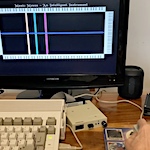
Discovering Music Mouse by Laurie Spiegel
I recently discovered that the Music Mouse software is available for Atari ST and Amiga.
The Atari was famous for its MIDI ports but since the Amiga has a serial port and MIDI is serial, it's simple to add MIDI ports and they're well-supported in the Amiga software canon.
Music Mouse by Laurie Spiegel is a fun and original musical interface.
It was a lot of fun to get this running and try it out. I will be using it a lot more, since there are a lot of features to discover. See how it works in my video.
www.youtube.com/watch?v=Irb_BFijsYU

The new 'After Dark' edition MIDIPan with RGB LED
MIDIPan now has optional RGB LED lighting. Personally I find that it adds so much to the experience of playing this instrument.
The idea has been in my head since the start, I've prototyped it before, but haven't been able to find an effective way to implement it. I'd been thinking of the light coming out from between the top and bottom boards and/or through holes in the top. However, the perspex tripod mount is standard on all MIDIPans now, and it occurred to me to try edge-lighting that. It works a treat.
It's currently an option on the audio MIDIPan, codenamed the 'After Dark' edition (Although you can turn it off, I'm not taking it for granted that everyone will want it. Plus I have stock of the non-RGB audio pans). At some point I'll add it as an option to the MIDI-only version too.
Here's a video in a darkened room. It's very hard to get video of RGB lighting showing exactly how beautiful it looks in real life.
www.youtube.com/watch?v=R_031cDWZK8

Exploring The MIDISID Morpheus SID Synth
I am absolutely thrilled that Ms Mad Lemon has reviewed MIDISID and that she has enjoyed learning about it and using it.
Her review is absolutely genuine, since she bought hers through the usual channel before I realised who she was.
She is still discovering more about MIDISID and I look forward to more music from her.
www.youtube.com/watch?v=XcmvDMmBkuI
MIDI Inbox
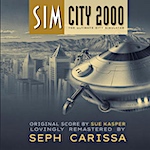
Sim City 2000 music remaster
Phil aka Pixel Prophecy aka Seph Carissa has remastered all of Sim City 2000's MIDI files.
Says Phil, "I remastered all of [the] files for today's listening sensibilities and cleaned up a few bits and bobs. Hope you like it!"
www.sephcarissa.com/music/simcity-2000-remastered

DIY digital touch synthesiser
Dylan B has been working on this touch synthesiser, using piezos as touch sensors. It appears to have four touch areas, but there's a whole lot you can do with each one.
He's made it fully open-source, so you could build your own,
www.youtube.com/watch?v=aGylQKjMqI0
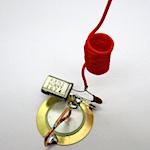
The piezo transmitter
Also in piezo news, as part of Hackaday's 'component abuse' challenge, b.kainka has found that a piezo can briefly generate enough energy to power a transmitter.
Pressing the copper lever bends the disc and generates a voltage. When the lever touches the silver surface, the piezo disk is short-circuited, creating a sharp switching edge which excites a crystal to natural oscillations. A suitable receiver allows you to hear a consistent pling or plop.
More details are on the project page.
hackaday.io/project/204295-the-piezo-transmitter

All five generations of Stylophone compared!
You may think that the tone of the stylophone is distinctive and instantly recognisable, but this short shows that it has changed quite a bit over the years.
Musical Miscellany has quite a collection, and plays one of each generation back-to-back in this short.
He has a playlist containing all of his Stylophonic videos.
https://www.youtube.com/shorts/ConlGLByneA

My dream microphone costs $25,000, so I made my own
Roan Zen Martin explains that the U-47 has a distinctive sound; a low end as velvety as his hair, interesting proximity effect and smooth top end. It's said to be Frank Sinatra's favourite mic. They also cost $25,000.
Roan admits that he knew nothing about building microphones (though he surely does now) but manages to build a clone of the mic from parts. His whole journey is documented in this video.
www.youtube.com/watch?v=hFXfJk1FC9E
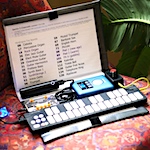
Ultra portable music systems
Mark Vail and David Battino tired of lugging gear to gigs and setting it up. This is how BinderBlip came to be - a small keyboard and other equipment packed into a ring binder. There followed a series of small briefcase-sized systems as documented here in this Make: article.
makezine.com/article...ultra-portable-music-systems

Build a ribbon synth with Daisy Seed
I was pleased to see this tutorial since I have already experimented with a similar ribbon controller. Maybe there are different types but the ribbon I have requires a little more pressure than I'd hoped, which spoils the playing experience. I'm currently thinking that a string of capacititve-touch pads would be far more pleasant to play. Watch this space.
However, if you fancy trying one of these ribbons, this tutorial will take you from first principles to working ribbon synth.
www.youtube.com/watch?v=iUDOLJ1Ki84

Synth using Daisy and Arduino
GuitarML's touch synth is also very capable and is perhaps a little more polished since he's reached the custom PCB stage. It has 21 gold-plated keys for almost two chromatic octaves, along with some further pads for controls. It has ADSR, filtering and much more.
He begins with a demonstration and then a walkthrough. If you'd like to make one, modify it or even improve it, the pcb and code are all open source.
www.youtube.com/watch?v=tRJoIYXkm-U
Sound chips and retrocomputing
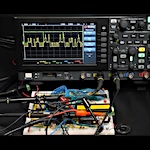
The SID: classic 8-bit sound
Ben Eater is a legend in the homebrew computer world with his breadboard-based bare bones 6502 computer.
In this video he adds sound to his machine in the form of a SID. Obviously it pairs nicely with the 6502 processor, both made by MOS under Commodore ownership. (The 6510 in the C64 is a 6502 variant).
It's always a joy to hear Rob Hubbard's music being rendered by a real 6581, which you can hear by skipping to the marked chapter 'demo' at 29:49 but for most of this video Ben is taking a deep look into the features of the SID, how it connects to the 6502 processor, how he has ported the Monty on the Run .sid file (easier than it might sound because a .sid contains not only the music data but the program to play it and drive the SID).
www.youtube.com/watch?v=LSMQ3U1Thzw

Tetris theme - contemporary big band/classical fusion version
I feel that the story above gives me an excuse to slip in this epic version of Tetris A by the 8-bit Big Band
www.youtube.com/watch?v=wV7GijG9ZWY
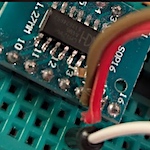
10 cent microcontroller makes tracker music
This is a remarkable demonstration of what's possible with an incredibly cheap microcontroller with 16k of memory, a clock speed of 48MHz and only PWM (no DAC). Tim has a MOD player running which sounds great.
A mod is a halfway house between programmable sound chips and full PCM playback. Mod files contain the short samples needed for the song along with the tracker data for playing them back.
hackaday.com...10-cent-microcontroller-makes-tracker-music

Catchy Megadrive-inspired soundtrack out now
I love the fact that a megadrive-inspired 2D platformer is released, and that the chiptune soundtrack is available everywhere.
Main link goes to the music. Press release is here.
scarletmoon.to/sirnoggin
Products and reviews

David Bellinger's Magic Box
This video from Hainbach features the kalimbas of David Bellinger, now made by Darrin Wiener. There's an interview with David and the video focuses on the Magic Box which uses parts from a Fisher Price toy, now difficult to obtain.
www.youtube.com/watch?v=k_qMSegjuqU
Performances

Green Grow The Rushes, Oh (on twelve instruments)
tepreece is a man after my own heart, owning a delightful variety of instruments. He has taken the concept of the 'cumulative song' (Greeen Grow the Rushes Oh here) and applied it to the instrumentation too, adding an instrument at each verse. They include two ocarinas, a pocket sax and vintage Casio and Yamaha keyboards.
makertube.net/w/8vvfi8hr84ZPxndrLcH5da
Traditional and acoustic instruments

Norway's Ice Music Festival
Each year in Norway, the Ice festival is held on a stage and auditorium sculpted from ice and snow. A group of instrument makers and musicians carve the instruments from wild ice.
This is a beautiful documentary about the event.
www.youtube.com/watch?v=xSk7s0Mkvt0

Schalmei or Martin's trumpet
As a brass player, this caught my eye and I can't disagree that this is a monstrosity of an instrument. Although I love the look of the multiple bells which give it the look of some kind of gatling trumpet, it's not truly brass as it appears to have a reed, making it sound more like a party horn.
www.youtube.com/shorts/WVczk8UOvQI
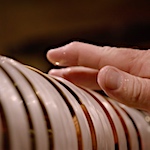
Glass (H)armonica
It made me very happy to see a glass harmonica (alternatively glass armonica, as we learned during the show) on series 67 episode 5 of Later with Jools Holland.
Florence Welch used the instrument on her latest Florence and the Machine album, saying that it sounds like 'a portal to another dimension' and brought along her glass armonica player for her performance on the Later show. We see it being used in the opening track of the show, and ten minutes into the show she discusses it with Jools during her interview.
We learned that Benjamin Franklin invented the instrument in 1761 and both Mozart and Beethoven composed music for it ahead of Florence.
I'm not sure about availability of BBC programmes outside the UK. If you are outside the UIK and can watch the show, please let me know.
www.bbc.co.uk/iplayer/episode/m002lvd8/later-with-jools-holland-series-67-episode-5

Nicolas Bras - aquatic harp
It's been some months since Nicolas Bras has published a longer video but this recent short caught my eye, which is a reminder of a longer-form video that he made three years ago. The title suggests that he's making a new version of this instrument.
His aquatic harp reminds me of the flexatone. Nicolas has a talent for taking sampled sounds and making some beautiful music with them.
www.youtube.com/watch?v=VpjMCZp7nqs
But is it art...?
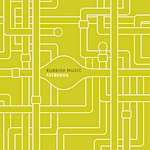
Rubbish Music - Fatbergs
Rubbish Music refers more to the subject matter than the quality of the music but make up your own mind about that.
This project is aiming to draw attention to, as well as use field recordings from, the problematic monsters that build up in our sewer pipes.
If you put the disgusting subject matter out of your mind, the ambient music is calming and I've successfully used it for getting off to sleep.
neural.it...rubbish-music-fatbergs
All that remains is for me to thank everyone who blogs, vlogs, writes articles or posts pictures on the subjects I'm excited by.
Nor can I do the things I do without your support, so thank you for that.
If you're on the email list then please forward this to anyone who may be interested. If you've received this email from a friend, then please consider joining the list, the sign-up form is below.
It's always good to hear from readers for any reason and I'd particularly like tip-offs about about any relevant stories, video, websites or social media accounts that I should be following.
Happy music-making!
Shiela Dixon - Editor / curator
shiela@peacockmedia.software
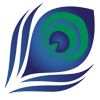 A PeacockMedia publication
A PeacockMedia publication
Sign-up form : MIDI IN newsletter

 PeacockMedia
PeacockMedia
















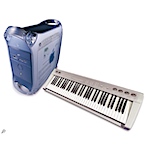









 A PeacockMedia publication
A PeacockMedia publication